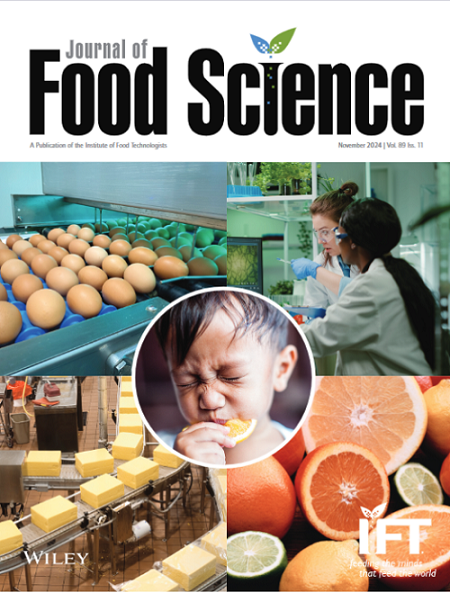Effect of Ohmic Heating on the Quality and Nutrient Preservation of Plum Marmalade: A Comparison With Conventional Heating
Abstract
In this study, plum marmalade was prepared using the ohmic heating method at three distinct voltage gradients (30, 35, and 40 V/cm). The quality properties of the marmalade prepared this way were contrasted with those prepared using the conventional heating method. Total phenolic content (TPC), antioxidant activity (AA), vitamin C content, total color change (ΔE), hydroxymethylfurfural (HMF), and the amount of time needed for the process, including heating and evaporation, were all measured as part of the study. According to the findings, ohmic heating—specifically, a voltage gradient of 40 V/cm—significantly reduced the heating time when compared to the traditional method, which raised the stability of vitamin C, AA, and phenolic compounds. When ohmic heating was used instead of conventional heating, the amounts of TPC, AA, and vitamin C increased by 19.50%, 33.90%, and 149.12%, respectively. In comparison to traditional heating under atmospheric conditions, the results also showed that ohmic heating increased the amounts of gallic acid (40.61%), catechin (40.98%), chlorogenic acid (25.05%), and rutin (24.67%). Furthermore, the results showed that ohmic heating reduced the amount of HMF (34.34%) and ΔE (2.27%) in comparison to conventional heating. TPC, AA, vitamin C, gallic acid, catechin, chlorogenic acid, and rutin were higher than conventional heating; nevertheless, HMF and ΔE were lower than conventional heating at the applied ohmic heating process. The results obtained indicate a strong potential for an ohmic heating system as a rapid heating method for preserving nutritional value.





 求助内容:
求助内容: 应助结果提醒方式:
应助结果提醒方式:


